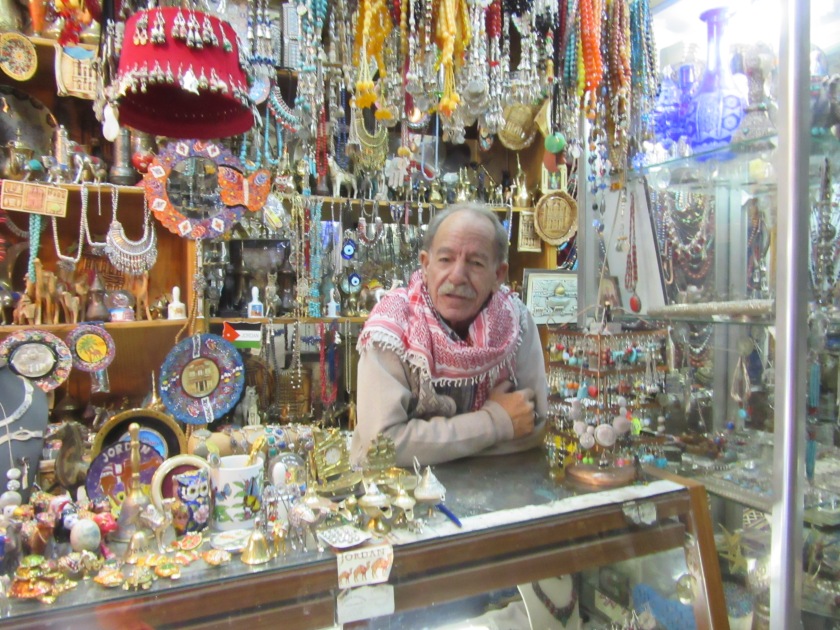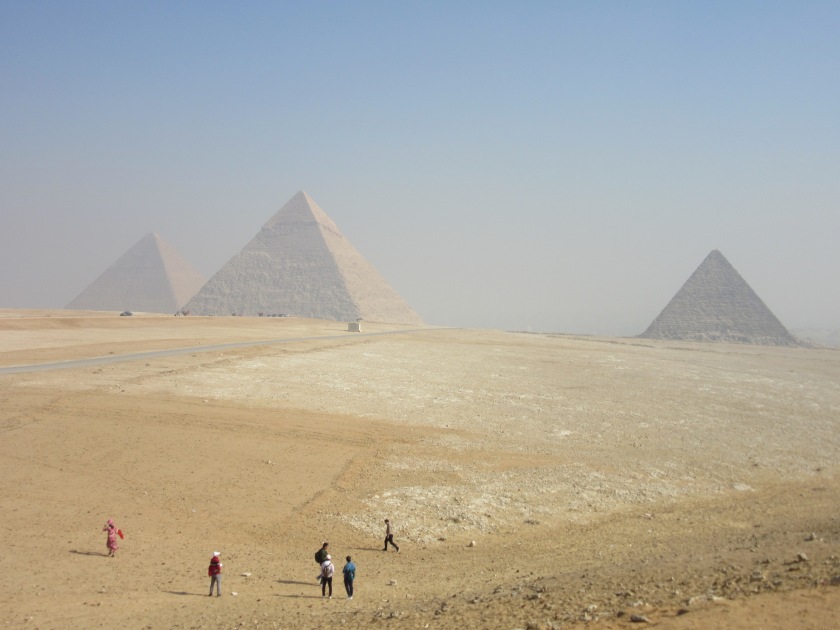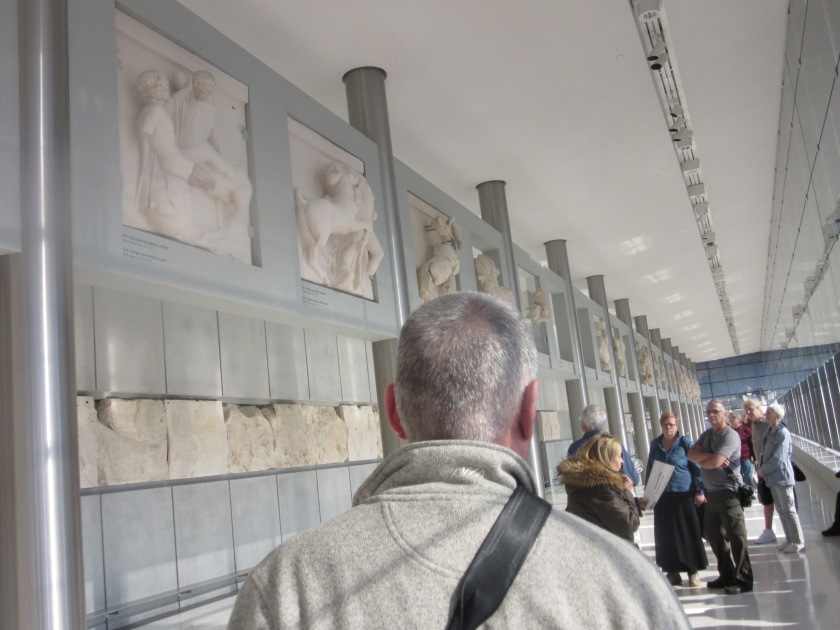December 22 to December 27
From Luxor, Egypt, we returned to the ship in Safaga. Tired and concerned about a suspicious scratching in my throat, I slept through most of the four-hour bus ride and looked forward to five lazy days at sea on our way to Oman.
Those five days were quiet all right: five days mostly spent in bed with acute pharyngitis and coughing up a storm, so to speak. The ship’s doctor (an Italian fellow from Torino) prescribed eight days of antibiotics and a big bottle of cough expectorant for the same length of time. The cost for his services came in at just under $400. (Thank goodness for travel insurance.) Over the next several days, almost a quarter of the passengers got sick. One man was sent home with pneumonia.
Nevertheless, the ship provided a spectacular Christmas feast. Sadly, the pills I was taking made everything taste like metal.
We reached Oman three days after Christmas. Our first stop was the port of Salalah. To get to there we had to go through the strait of Bab el-Mandeb, an area where pirates had once been active, although not for several years. Our captain gathered us together to reassure us. Pirates, he said, had little interest in cruise ships. They targeted freighters so they could hold the cargos or ransom. In any case, our ship has barbed wire where intruders might try to board, and armed guards n board if the worst happened.
Salalah, Oman
December 28
We docked in Salalah, an important in the Arabian Sea because it connects Africa, the Middle East and Asia. It is also the birthplace of the current, much-loved sultan, Qaboos bin Said who, according to our guides, took over from his despotic father almost half a century ago and went on to build the county’s infrastructure from scratch. The sultan is now in his late 70s. He never married and has no heirs, and people worry about who’s going to succeed him when he dies.
The city of Salalah isn’t much to write home about. The morning coach tour took us to Mughsail beach where, if the conditions are right, fountains of water explode from blowholes created by collapsed caves. We did see a spray of water that day but it was was more like a shower than an explosion.

We hopped back on the bus and headed to an isolated hilltop overlooking Salalah and the Jubriah Plain, where the prophet, Job, is said to be buried.
“What evidence do you have this is Job’s burial place?” I asked.
“None at all. It’s legend,” the guide replied.
And yet the hilltop has become a sacred place to Muslims, Christians and Jews alike and they visit in droves.

What’s a visit to a new city without a bit of shopping? Our guide took us to the Al Husn souk. Unfortunately, except for a couple of stores offering frankincense and cheap souvenirs, most of the shops have been shut down in favour of Western-style malls.
In the afternoon I could have taken a second excursion but took it easy instead. (The cough, you know.) The tour went to Taqa, a fishing village, to Sumhuram, once the capital of Arabia’s frankincense trade, and to the remains of what is known as Queen Sheba’s palace on a hill overlooking Kjawr Rawri beach. Those who went on the excursion said it was a magical experience. Too bad I missed it.
Muscat, Oman
December 31
From Salalah we sailed northward to Muscat, the country’s capital, located on the Gulf of Oman. The city is the cleanest I’ve ever seen. The buildings glow white in the sun (by law exteriors must be white or cream). Muscat’s history dates back to antiquity but the modern-day city mixes high-rises with Western-style shopping malls.
The magnificent marble-clad Grand Mosque was competed in 2001 and can hold twenty thousand worshipers. Inside the mosque a magnificent chandelier made of Swarovski crystal hangs from the centre of a fifty-meter dome. Everywhere you look, the tile work, the expanse of Persian carpeting, the carvings embellishing the giant doors leaves you in awe. This place has been built with loving care.




After visiting the mosque, we got a half-hour of shopping at the huge Mouttrah Souk (yes, I bought a little something) before we rushed off to the Bait al Zubair museum. It was a nice little museum displaying traditional Omani dress, khanjar daggers and other Omani artefacts but we had only fifteen minutes there before we had to get back to the ship to lunch.
That evening the ship arranged a lavish New Year’s Eve party, which started at eleven. Those with the energy drank champagne and danced into the wee hours. As for me, I had a lovely dinner with a group of lovely people and went to bed just after eleven, where I coughed the night away.
Next stop, Porbandar, India.













